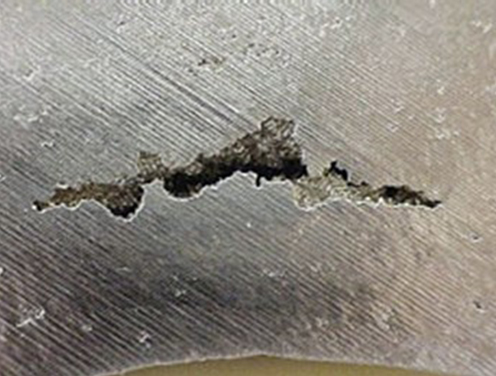1. Introduction to Inclusion Defects in Investment Casting
1.1. Why Should You Worry?
India, the second largest investment casting manufacturer, produced over 1.5 Lakh tonnes of Investment castings in 2019, earning a revenue of 900 million dollars. Where as in the same year US produced just over 1 Lakh tonnes of investment castings earning a whopping revenue of $ 2.2 Billion dollars. The US could earn more than two times as much as India’s revenues in-spite of producing less. This large gap can only be attributed to the quality of the casting manufactured. In the stringent global market metal casters face today, delivering good quality in time is crucial for metal casters.

Many foundries today face revenue loss in-spite of having large order bookings and sufficient manufacturing capability. The intense competition casting manufacturers face today narrows the window for any kind of mistakes or complications in the manufacturing process. High rejection rates, inability to deliver castings on time and expensive post processing is squeezing out profit margins.
One such complication investment casters can improve upon is the detection and reduction of inclusion defects in their components. Inclusion defects are classified as positive or actual defects. Positive defects are those that are physically present in the casting and can be seen or felt. These defects are typically easy to identify and correct.
1.2. What are Inclusion defects?
Inclusion defects occur when foreign particles, such as chipped moulds or insufficiently burned-out wax, get trapped in the casting during the pouring process. Various factors can cause these particles to enter the casting, such as inadequate wax or mould processing or the use of burnout ovens with cracked shells from previous castings. Addressing these issues can help investment casters improve their products’ quality and reduce the likelihood of losing business due to defects.
Inclusion defects have a negative impact on the quality and strength of the final cast part. Inclusions can create stress concentrations in the metal, which can lead to cracking or failure under stress. In addition, inclusions can also cause surface defects such as pits or voids, which can be unsightly and may require additional finishing operations to correct.
1.3. What are the types of Inclusion Defects?
Some common types of inclusion defects in investment casting are:
- Ceramic inclusions: the ceramic material used to create the shell can sometimes break away and fall inside the shell body. Many times, shell is not properly cleaned or prepared, the mould is left with particles of sand, clay, or other materials that can be transferred to the molten metal during casting.
- Wax inclusions: The wax pattern can contain impurities or foreign particles that do not burn out. These can come from the wax itself or from the tools used to create the pattern.
- Slag Inclusion: This occurs when particles of slag or other impurities become trapped in the casting. Slag inclusion can create weak spots in the casting and reduce its overall strength.
- Oxide Inclusion: This occurs when particles of oxide become trapped in the casting.
- Gas Inclusions: This occurs when small voids or bubbles are trapped in the casting. Gas inclusions can weaken the casting and make it more susceptible to cracking or failure.
1.4. How do you identify inclusion defects?
Inclusion defects in investment castings can be identified through various methods, including visual inspection, X-ray imaging, and ultrasonic testing. Here are some ways to identify inclusion defects in investment castings:
- Visual Inspection: This method involves a thorough examination of the casting’s surface, including visible cracks, porosity, or uneven surfaces that may indicate the presence of inclusions. Any defects observed during this process should be documented, and the castings should be rejected or reworked.
- X-ray Imaging: This method involves using X-rays to create an image of the casting’s internal structure. The images produced can be analyzed to identify any inclusions, cracks, or other defects that may be present. X-ray imaging can detect even small inclusions that are not visible to the naked eye.
- Ultrasonic Testing: This method involves using ultrasonic waves to detect internal defects in the casting. A probe is placed on the casting’s surface, and ultrasonic waves are transmitted into the material. Any inclusions or other defects will cause the waves to bounce back to the probe, where they can be detected and analyzed.
Investment casters may use a combination of these methods to detect and minimize inclusion defects in their products. By identifying and addressing these defects early in the production process, they can improve the quality of their castings and reduce the likelihood of defects causing problems later on.
Let us take a detailed look into each of the types of inclusion defects and how to mitigate them in the next section.



